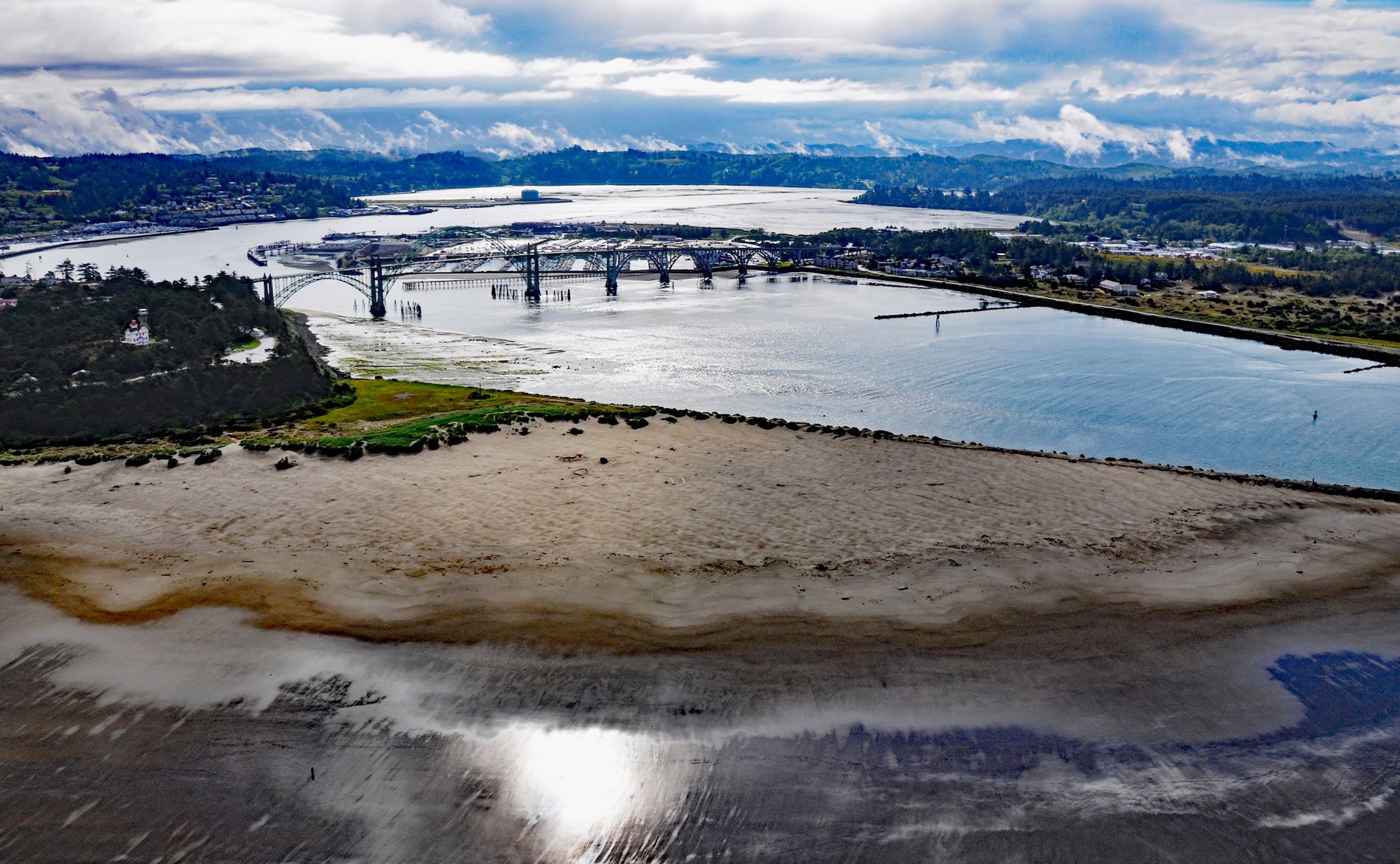Newport is a coastal community on Yaquina Bay on the central Oregon coast, about 39 miles (63 km) west of Corvallis and 23 miles (37 km) south of Lincoln City, Oregon. Yaquina Bay is an estuary, approximately 2,048 acres (829 ha) in area, with freshwater input from the Yaquina River that mixes with saltwater from the Pacific Ocean. Yaquina Bay is named after the Yaquina people that now live on the Siletz Reservation. Historical uses of Yaquina Bay include commercial oyster farming, fishing, and recreational clamming. Shipping became economically important when the road connecting Yaquina Bay to the Willamette Valley was completed in 1873, followed by a railroad in 1884. In 1888, jetties were constructed at the bay entrance to improve navigation by minimizing the effects of shifting coastal sand. In 1936, the Yaquina Bay Bridge was built to replace a ferry and is one of the most recognizable bridges designed by Conde McCullough.
The principal communities on the bay are Newport, a popular tourist destination along U.S. Highway 101, and Toledo, a small pulp mill town at the head of the bay. Most of the residential population of approximately 10,000 live in Newport on the north shore of Yaquina Bay. Seasonally, the population of Newport increases significantly due to its popularity as a seaside tourist destination. The Hatfield Marine Science Center is a research and education facility operated by Oregon State University in cooperation with five state and federal agencies. The facility occupies 49 acres (20 ha) site on the south shore of the bay adjacent to the Oregon Coast Aquarium. Much of this development is within the tsunami inundation zone identified by the Oregon Department of Geology and Mineral Industries and published in a series of maps for the coast of Oregon.
Tsunamis are large sea waves triggered by undersea earthquakes or landslide activity and can travel thousands of miles in a matter of hours. The Pacific Ocean has several possible sources for these waves including Alaska, Chile, Japan and the Cascadia Subduction Zone off the coast of Oregon. The continental shelf off the Oregon coast is the site of the convergence of two crustal plates. Earthquakes along the boundary, called subduction earthquakes, can be of magnitude 9 and can cause major tsunamis. Geological and archaeological evidence suggests that the last great subduction earthquake took place in 1700 AD and may have intervals averaging about 500 to 600 years. Tsunamis travel at high speeds in the open sea and increase in height as they enter shallow water. Tsunami warning centers announce waves that pose a hazard around the Pacific Ocean. Warnings relayed through the media may be possible for tsunamis from great distances, but may not be in time for evacuation of certain structures when the source is only a hundred miles offshore. For an earthquake near the coast, a tsunami could come onshore in 10 to 30 minutes. People most in danger of the waves are those on beaches and tidal flats or near bays and river mouths. Avoiding the danger means moving to high ground quickly and safely. Certain structures are difficult to evacuate, so ideally these buildings should not be placed in the expected tsunami inundation zone. That is the premise for the building restrictions implemented in Oregon within the tsunami inundation zone predicted by models and geological evidence. Read more here and here. Explore more of Yaquina Bay and the Oregon Coast here:

